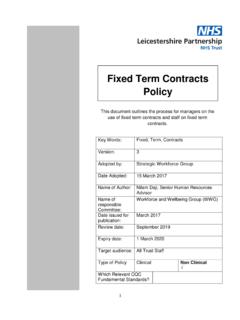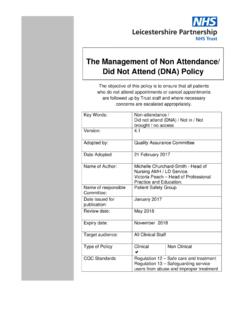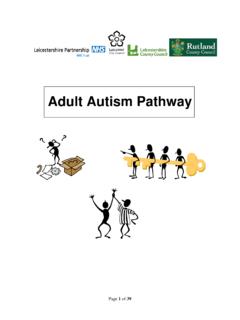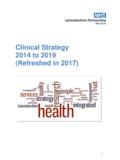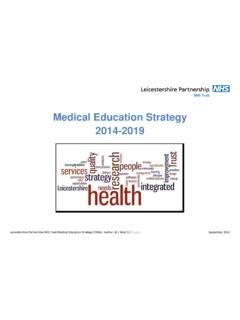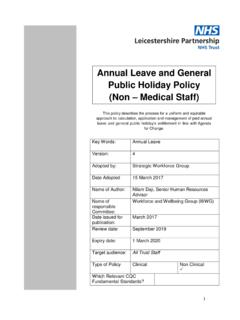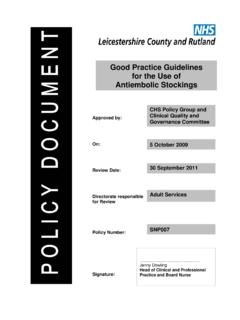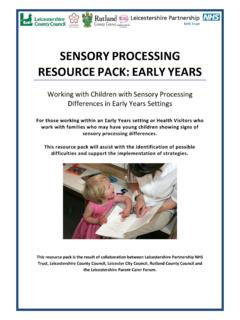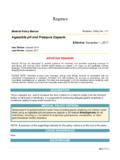Transcription of Using the Braden Q Scale to Predict Pressure Ulcer …
1 Journal of Pediatric Nursing (2011) xx, xxx xxx Using the Braden Q Scale to Predict Pressure Ulcer Risk in Pediatric Patients Catherine Noonan RN, MS, CPNP, CWON a, , Sandy Quigley RN, CPNP, CWOCN b , Martha Curley RN, PhD, FAAN c,d a Department of Nursing, Children's Hospital Boston, MA. b Department of Patient Services, Children's Hospital Boston, MA. c Critical Care and Cardiovascular Program, Children's Hospital Boston, MA. d University of Pennsylvania School of Nursing, Philadelphia, PA. Key words: The Braden Q Scale for Predicting Pediatric Pressure Ulcer Risk ( Braden Q Scale ) is a widely used, Pressure Ulcer .
2 Valid, and reliable pediatric-specific Pressure Ulcer risk assessment tool. Since its original publication, Risk assessment;. requests for clarification on how best to use the tool across the wide spectrum of pediatric patients Braden Q Scale commonly cared for in health care systems have been received. Common clarifications focus on Using the Braden Q Scale as originally designed; specifically, not Using untested derivations of the tool, and not Using the Braden Q Scale to Predict medical device-related Pressure damage. The purpose of this article is to provide practical information on how best to use the Braden Q Scale and how to score a pediatric patient's risk for Pressure ulcers.
3 Accurate assessment of patient risk for Pressure ulcers is the first step in guiding appropriate nursing interventions that prevent Pressure ulcers. Patient assessment, scoring, and common clinical scenarios are presented. 2011 Elsevier Inc. All rights reserved. PREVENTING Pressure ULCERS is an important for at-risk patients, rather than all patients, will optimize the phenomenon of concern to pediatric nurses. Pressure ulcers appropriate use of resources. in this population represent a serious yet preventable The Braden Q Scale (Table 1) is a valid and reliable iatrogenic injury. Numerous health care organizations track pediatric-specific Pressure Ulcer risk assessment tool.
4 Since their Pressure Ulcer prevalence rates to describe, in part, the its original publication in 1996, the authors have received quality of the nursing care they provide within their numerous requests for clarification on how best to use the institution. These data are also used to benchmark nursing tool across the wide spectrum of pediatric patients commonly care quality across health care organizations. cared for in pediatric health care organizations. The purpose To better understand an institution's Pressure Ulcer rate, it of this article is to provide practical information on how best is also important to understand their patient populations' to use the Braden Q Scale and how to score a pediatric level of risk for Pressure ulcers.
5 Successful Pressure Ulcer patient's Pressure Ulcer risk. Patient assessment, scoring, and prevention programs should be assessed from a perspective common scenarios are presented. of identifying at-risk patients who remain Pressure Ulcer free. Tools that describe Pressure Ulcer risk should Predict patients at risk and patients not at risk for Pressure Ulcer Development of the Braden Q Scale development. Initiating Pressure Ulcer prevention strategies Quigley and Curley (1996) developed the Braden Q Scale for Predicting Pediatric Pressure Ulcer Risk by adapting the Corresponding author: Catherine Noonan, RN, MS, CPNP, CWON.
6 Adult-based Braden Scale for Predicting Pressure Sore Risk E-mail address: (C. Noonan). (Bergstrom, Braden , Laguzza, & Holman, 1987) with the 0882-5963/$ see front matter 2011 Elsevier Inc. All rights reserved. 2 C. Noonan et al. Table 1 The Braden Q Scale for Predicting Pediatric Pressure Ulcer Risk From Quigley and Curley (1996). permission of its primary author (personal communication, constructed from a physiologically based conceptual frame- Nancy Bergstrom, December 12, 1994). The adult-based work that was population independent ( Braden & Bergstrom, Braden Scale was selected because it was the most valid and 1987).
7 The framework identifies two critical determinants of reliable instrument at the time and also because it was Pressure ulcers: Pressure and tissue tolerance (Figure 1). Braden Q Scale 3. Figure 1 The conceptual framework identifying etiological factors of Pressure ulcers. Adapted from Bergstrom, Braden , Laguzza, and Holman (1987). Factors considered when assessing the intensity and duration The Braden Q Scale was validated in pediatric patients 3. of Pressure include the patient's mobility, activity, and weeks to 8 years of age. The specific age of 21 postnatal days sensory perception. Intrinsic and extrinsic factors are was selected because at 3 weeks of age the skin reaches considered when assessing the patient's tissue tolerance.
8 Relative maturity comparable to a full-term infant, regardless Intrinsic factors include the patient's ongoing nutritional of the infant's gestational age at birth (Malloy & Perez- status, age, and tissue perfusion/oxygenation; extrinsic Woods, 1991). The selection of 8 years of age reflected factors include the skin's moisture and exposure to both conventional norms; specifically, in 1994, the American friction and shear. Heart Association considered patients older than 8 years to The Braden Q Scale includes the six original Braden be an adult in terms of treatment (Chameides & Hazinski, subscales (mobility, activity, sensory perception, moisture, 1994).)
9 Patients with congenital heart disease were excluded friction and shear, and nutrition) but adds a seventh subscale, because the impact of chronic hypoxemia on Pressure Ulcer that is, tissue perfusion/oxygenation. The Braden Q Scale development was unclear. An opportunity exists to further modifications of the adult-based tool reflect the unique validate the Braden Q in the preterm and neonatal population developmental characteristics of pediatric patients, the (less than 21 postnatal days), in the adolescent and young prevalence of gastric/transpyloric tube feedings, and the availability of blood studies and noninvasive technology in Box 1.
10 The acute care pediatric setting. Adding the tissue perfusion/. oxygenation subscale was also consistent with Braden and What do the numbers mean? Bergstrom's original conceptual framework (1987) and Sensitivity is the percentage of patients who developed optimizes the use of data common to acute care settings. a Pressure Ulcer who were assessed as being at risk for The Braden Q Scale was validated in 2003 in a multisite a Pressure Ulcer . Good sensitivity indicates true prospective cohort descriptive study of 322 pediatric intensive positives while minimizing false negatives. Specificity care patients who were on bed rest for at least 24 hours (Curley, is the percentage of patients who do not develop a Razmus, Roberts, & Wypij, 2003).
